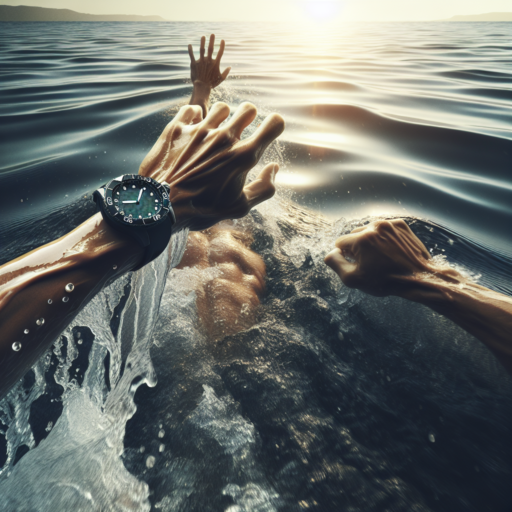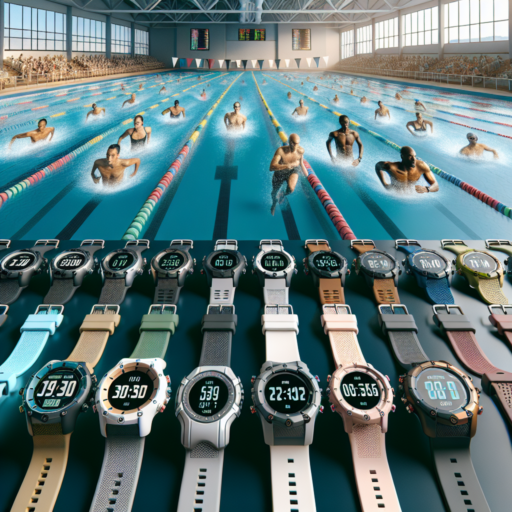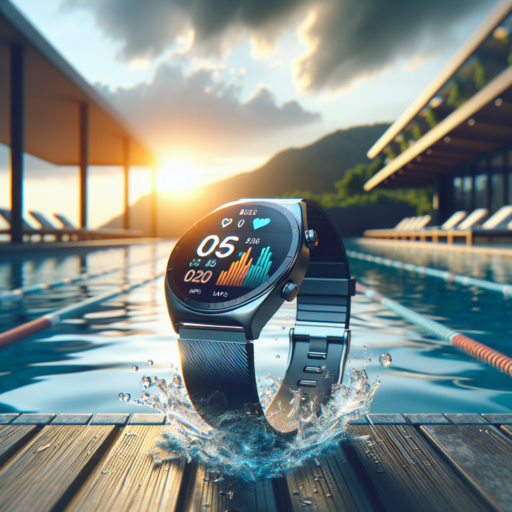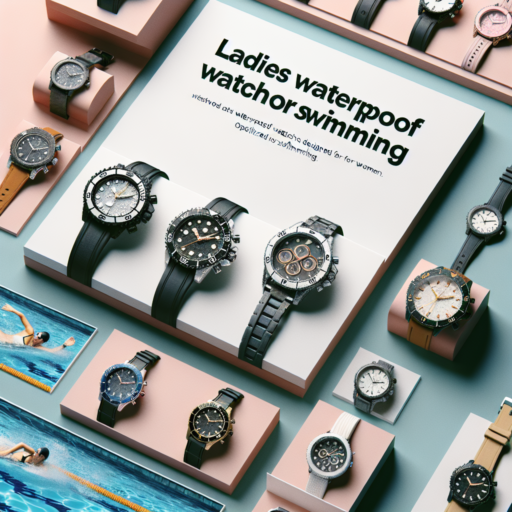No se han encontrado productos.
Top Open Water Swim Watches of 2023
In the world of swimming and triathlons, open water swim watches have become indispensable for athletes looking to track their progress and gain insights into their performance. The year 2023 has introduced some of the most innovative and feature-packed models, designed to meet the specific needs of open water swimmers. From GPS tracking to heart rate monitoring and stroke detection, these watches offer a range of functionalities to enhance your swimming experience.
GPS Accuracy and Water-Resistance stand at the forefront of considerations for choosing the perfect open water swim watch. The models released in 2023 have seen significant improvements in these areas, offering precise location tracking and durable designs that can withstand the pressures of deep-water activities. This ensures that swimmers can focus on their training without worrying about the performance of their gear.
Another noteworthy feature of this year’s top open water swim watches is their advanced analytics capabilities. Swimmers can now benefit from insights into their stroke types, swimming speed, and efficiency, allowing for a more tailored training regimen. Furthermore, with enhanced battery life and sleek designs, these watches are not only practical for the open water but also stylish for everyday wear.
How to Choose the Perfect Open Water Swim Watch
Choosing the perfect open water swim watch is essential for swimmers who want to track their performance and improve their skills. Open water swimming presents unique challenges compared to pool swimming, making it crucial to select a watch that’s tailored to the specific needs of the environment. In this discussion, we’ll explore key features to consider when selecting the ideal timepiece for your aquatic adventures.
Key Features to Look For
When shopping for an open water swim watch, there are several features to prioritize:
- Water Resistance: Ensure your chosen watch has a suitable water resistance rating for sustained immersion, typically around 50 meters or more for open water swimming.
- GPS Functionality: GPS tracking is invaluable for accurately measuring your swim distance and pace in the open water, a feature that traditional pool lap counters cannot provide.
- Swim Metrics: Look for watches that offer detailed swim metrics such as stroke rate, swim speed, and efficiency, as these insights can help refine your technique over time.
Considering these crucial features will lead you towards a watch that not only lasts but also meaningfully contributes to your swimming progress. Remember, the perfect open water swim watch should marry functionality with durability, ensuring that it can withstand the rigors of your swim without compromising on the in-water insights it provides.
5 Essential Features of an Open Water Swim Watch
When selecting the perfect open water swim watch, there are several key features that stand out as essentials. These features not only enhance the functionality of the watch but also ensure that swimmers can monitor their performance accurately in the challenging conditions of open water.
GPS Functionality
One of the most critical features for any open water swim watch is GPS functionality. This feature allows swimmers to track their location, monitor the distance covered, and navigate through open waters with precision. GPS plays a crucial role in setting and achieving distance goals, as well as in ensuring safety during swims far from the shoreline.
Water Resistance
Naturally, water resistance is a non-negotiable feature. The best open water swim watches offer a high level of water resistance, capable of withstanding the pressures of deep water swimming. This feature is vital not only for durability but also for the accurate functioning of the watch under various water conditions.
Swim Metrics Tracking
For swimmers focused on improving their performance, the ability to track detailed swim metrics is indispensable. This includes data on stroke count, stroke rate, swim pace, and overall distance. Having access to such detailed metrics allows swimmers to analyze their performance in-depth and make informed adjustments to their training regimes.
These essential features combine to make an open water swim watch a crucial tool for any swimmer looking to tackle the challenges of swimming in open waters efficiently. With the right watch, monitoring performance, ensuring safety, and achieving training goals become significantly more manageable.
Open Water Swim Watches: GPS vs. Traditional Tracking
Choosing the right tracking technology for open water swimming is crucial for athletes who aim to monitor their progress accurately. While traditional tracking watches have been the go-to for years, the advent of GPS technology has brought a significant shift. This comparison looks into how GPS and traditional tracking methodologies stack up for swimmers braving the open waters.
Accuracy in Distance Measurement
GPS technology, inherently accurate for distance measurement, offers a clear advantage in open water. It calculates your position by triangulating signals from satellites, providing precise metrics on how far you’ve swum. Conversely, traditional tracking watches rely on an accelerometer to estimate movement, which can be less accurate in the fluid dynamics of water. For swimmers keen on detailed performance data, GPS watches might be the better choice.
Reliability under Water
Water interference can significantly affect the performance of tracking devices. GPS watches might struggle to maintain a consistent signal if submerged, although modern advancements have made them more reliable. On the other hand, traditional tracking watches work independently of satellite signals, using internal sensors to track movement, which can be more reliable under water but might not offer the same level of detail in tracking as GPS-enabled devices.
Comparing Battery Life in Leading Open Water Swim Watches
When it comes to selecting an open water swim watch, one critical factor that often dictates the choice for many outdoor enthusiasts is the battery life. High-quality swim watches are designed to withstand the rigors of open water swimming, but it’s their ability to maintain long-lasting power that truly sets the leading brands apart. In this comparison, we delve into how the leading open water swim watches stack up against each other in terms of battery longevity, ensuring swimmers have the insights needed to make an informed decision.
Durability Meets Functionality: Analyzing Top Contenders
At the forefront of the discussion are brands like Garmin, Suunto, and Polar, each boasting unique features tailored to the open water swimming community. The Garmin Forerunner series, known for its precision and durability, offers various models that highlight their extended battery life, crucial for long-distance swimmers and triathletes. Similarly, Suunto’s Spartan and Polar’s Vantage watches present competitive battery lifespans, supported by sophisticated energy-saving modes that ensure the watches endure through extensive swimming sessions and beyond.
Understanding Battery Optimization
It’s not just the maximum battery life that matters; understanding how features like GPS tracking, heart rate monitoring, and backlight usage affect battery performance is vital. Advances in watch technology have led to improved energy efficiency, allowing these devices to perform multiple tasks while minimizing battery consumption. This optimization is particularly important in open water swimming, where the use of GPS for tracking swim distance and navigation can be particularly draining.
In conclusion, while the raw battery life figures provide a benchmark for comparison, the true test for swimmers lies in the balance between extended battery capacity and the efficient use of watch features. Thus, assessing battery life in leading open water swim watches requires a comprehensive understanding of how different models manage power consumption under various conditions.
Waterproof vs. Water-Resistant Watches: What Open Water Swimmers Need to Know
Understanding the difference between waterproof and water-resistant watches is crucial for open water swimmers who rely on their timepieces to withstand the rigors of their aquatic environment. While the terms may sound similar, they denote significantly different levels of water ingress protection, and choosing the wrong type can lead to unexpected damage and repair costs.
A watch labeled as water-resistant has been designed to resist the penetration of water to a certain degree but is not entirely impervious to it. These watches are rated by their ability to withstand pressure at various depths, typically measured in meters or atmospheres (ATM). For casual swimmers or those who only encounter water sporadically, a watch with a basic level of water resistance might suffice. However, it’s important to note that water resistance is not a permanent condition and can diminish over time due to wear and tear on the watch’s seals and gaskets.
In contrast, waterproof watches are often misconstrued to be invulnerable to water damage under all circumstances. In reality, the term «waterproof» is somewhat misleading in the watch industry. No watch is entirely waterproof, and the International Organization for Standardization (ISO) has prohibited the use of this term for describing watches since it implies a level of protection that cannot be guaranteed. Instead, watches designed for open water swimming and diving are categorized with higher water resistance ratings and are often referred to as dive watches. These are rigorously tested to meet specific standards, such as ISO 6425 for diving watches, ensuring they can withstand greater depths and prolonged exposure to water.
User Reviews: Best Open Water Swim Watches on the Market
When it comes to open water swimming, choosing the right gear is crucial. Among the most essential tools for any swimmer is a reliable open water swim watch. Users across the globe have shared their experiences and reviews to pinpoint the best open water swim watches available, highlighting the key features that make them stand out. Durability, GPS accuracy, and water resistance are top factors considered by swimmers when selecting these gadgets.
One standout feature that users frequently praise is the long battery life of top contenders. Open water swimming sessions can extend for hours, making it essential to have a watch that can keep up. Additionally, the accuracy of the GPS tracking in these watches ensures that swimmers can accurately measure their swim distance and navigate open waters more effectively. Users also appreciate watches with a user-friendly interface, as this makes it easier to access and review their data on the go.
Most Popular Open Water Swim Watches According to Users
- Garmin Swim 2: Praised for its comprehensive swim metrics, including stroke count and pace.
- Suunto Spartan Trainer Wrist HR: Renowned for its rugged design and multifunctionality, suitable for a variety of sports.
- Apple Watch Series 7: Highlighted for its seamless integration with other Apple devices and accurate heart rate monitoring.
Feedback on these watches often includes mentions of exceptional water resistance, allowing swimmers to dive deep without worrying about the watch’s functionality. The detailed swim metrics provided by these watches, such as stroke detection and SWOLF scores, are invaluable for swimmers looking to improve their technique and overall performance. Moreover, the social sharing features available on some models encourage a sense of community among users, as they share their achievements and challenges online.
Setting Up Your Open Water Swim Watch: A Step-By-Step Guide
Setting up your open water swim watch is crucial for tracking your progress and staying safe while swimming in vast, unpredictable waters. This step-by-step guide is designed to help you seamlessly navigate the setup process, ensuring you’re ready to dive into open water training with confidence.
Choose the Appropriate Mode
Firstly, it’s essential to select the correct mode on your watch that’s specifically designed for open water swimming. This mode optimizes GPS tracking for a more accurate measurement of your swim route. Look for a «Settings» or «Mode» option in your watch menu, and choose the open water or swim mode. If your watch offers customization options, tailor the settings to your specific needs, such as turning on long battery mode for extended swims.
Adjusting Your Swim Settings
Once you’ve selected the right mode, adjust your swim settings for a personalized experience. This includes setting goals for distance, time, or calories burned. Tailoring these goals can be highly motivating and help track your progress over time. Additionally, consider enabling alerts for pace, heart rate, and swim speed to keep you informed and safe during your swim.
Understanding and configuring your open water swim watch is about more than just enhancing performance; it’s about ensuring safety and maximizing the effectiveness of each swim session. By following these steps, you can confidently explore the open waters, knowing your swim watch is set up to support your aquatic adventures.
How Open Water Swim Watches Improve Your Training Sessions
Integrating open water swim watches into your training sessions can significantly enhance your performance and training efficiency. These watches are designed specifically for the unique challenges and dynamics of open water swimming, providing metrics that are crucial for any swimmer looking to improve. By tracking your distance, pace, stroke rate, and more, these watches give you the insights needed to refine your technique and boost your speed in the water.
One of the key features of open water swim watches is their ability to monitor your swimming route via GPS. This is particularly beneficial in open water where it can be challenging to maintain a straight course. By analyzing your route post-swim, you can identify areas for improvement in navigation, saving you precious time and energy. These watches often come with easy-to-read displays, allowing swimmers to check their stats mid-swim without breaking stride.
Furthermore, stroke analysis provided by these watches can be a game-changer for competitive swimmers and triathletes. Advanced sensors and algorithms offer detailed feedback on your stroke type, efficiency, and even suggest areas of improvement. This real-time data is invaluable for making immediate adjustments to your technique, leading to enhanced performance and reduced risk of injury. Monitoring heart rate and calories burned also helps in designing a comprehensive training program that addresses both stamina and speed.
Maintenance Tips for Your Open Water Swim Watch
Maintaining your open water swim watch is crucial for ensuring it performs optimally during every swim. Whether you’re a competitive swimmer or enjoy open water swimming as a leisure activity, these maintenance tips can help extend the lifespan of your swim watch. From routine cleaning to software updates, keeping your watch in top condition is easier than you might think.
Regular Cleaning After Use
One of the most important maintenance steps for your open water swim watch is to clean it regularly. After each swim, rinse your watch under fresh water to remove any salt, chlorine, or other residues that can corrode the watch materials over time. Use a soft, lint-free cloth to gently dry the watch, ensuring you avoid any abrasive materials that could scratch the screen or body of the watch.
Check for Software Updates
Keeping your open water swim watch’s software up to date is essential for optimal performance. Manufacturers often release updates that enhance the watch’s functionality, fix bugs, or improve its accuracy. Regularly checking for and installing software updates can help ensure your watch is performing as intended, providing you with the most accurate data during your swims.
Proper maintenance of your open water swim watch isn’t just about caring for its physical components; it also involves ensuring the software is up to date. This holistic approach to maintenance will help your watch remain a reliable tool for tracking your swims and improving your performance in the water.




